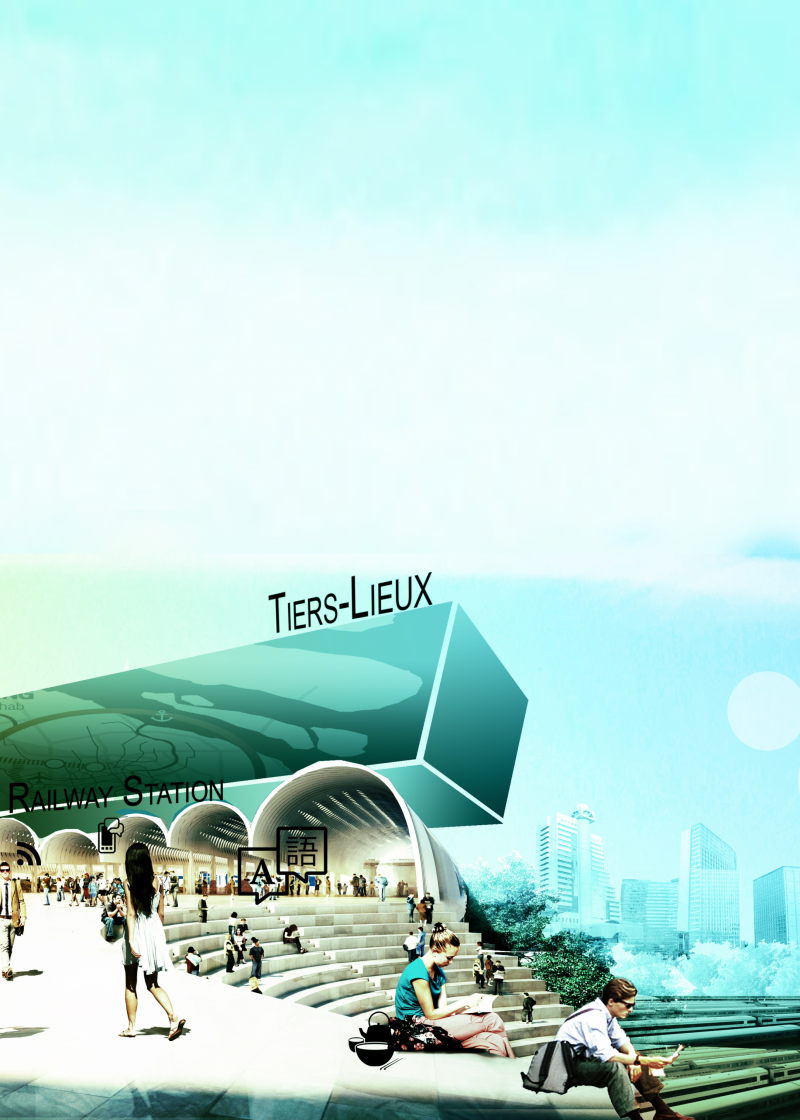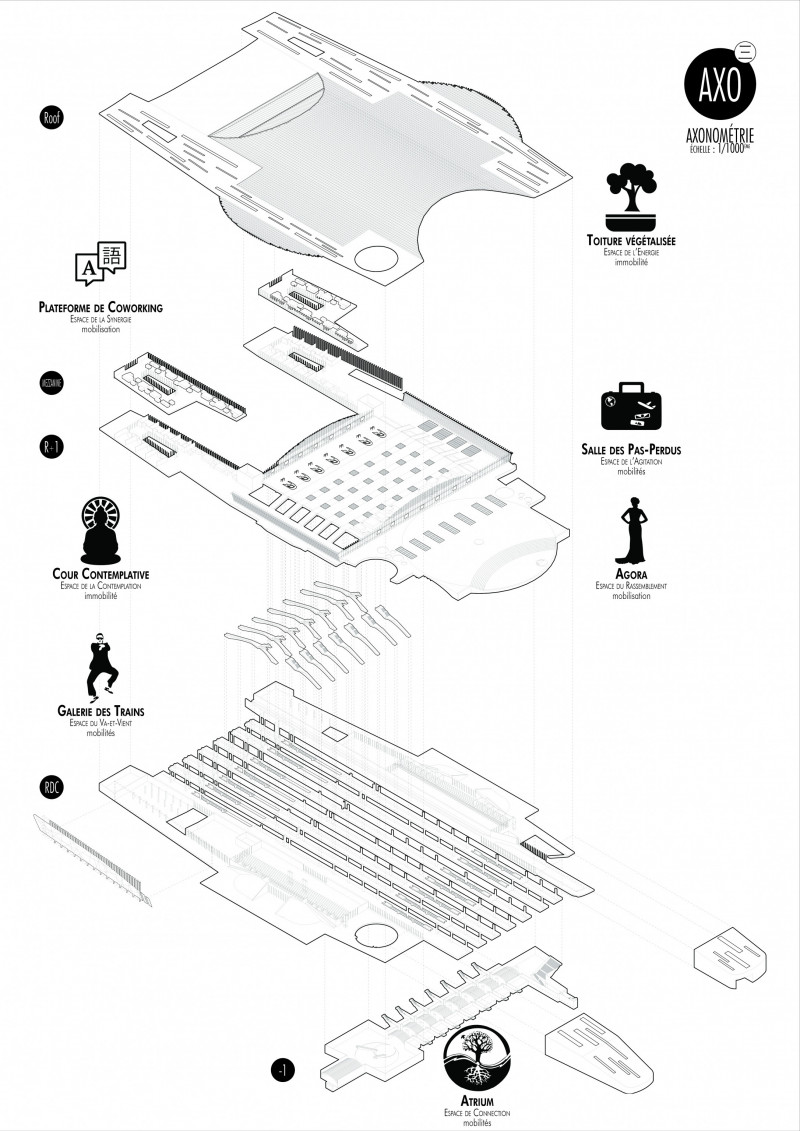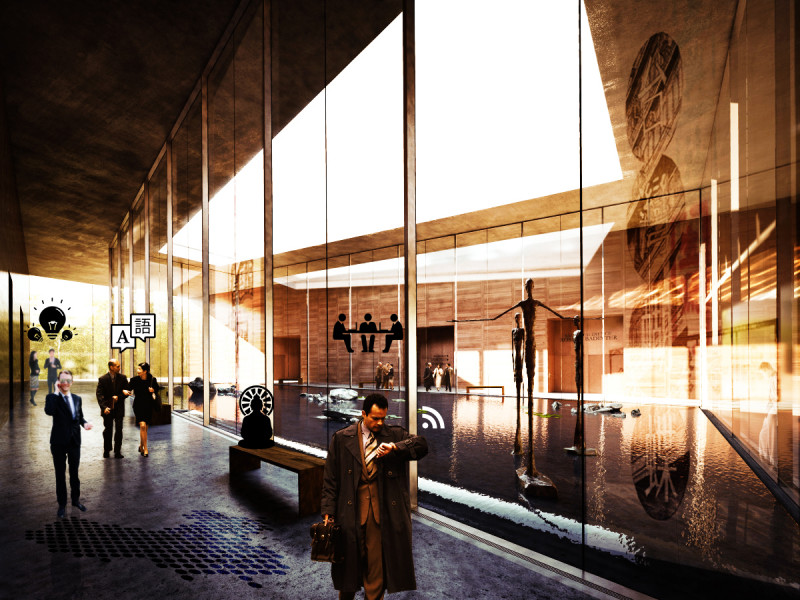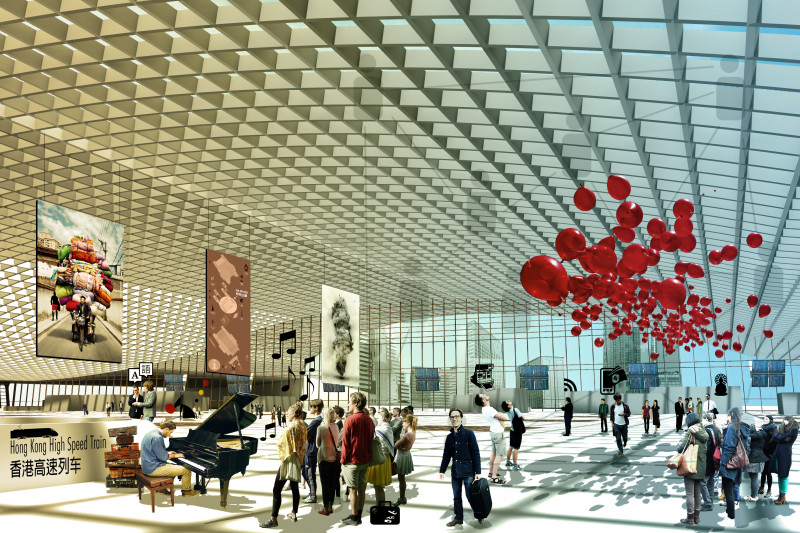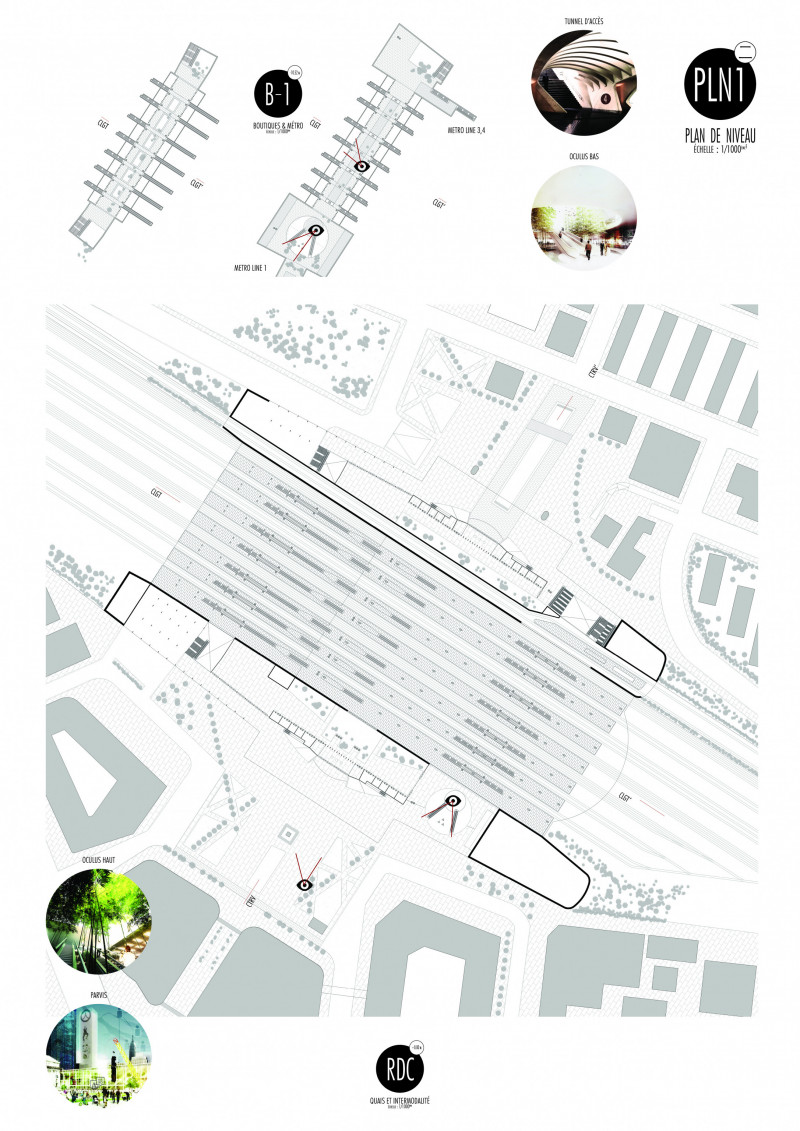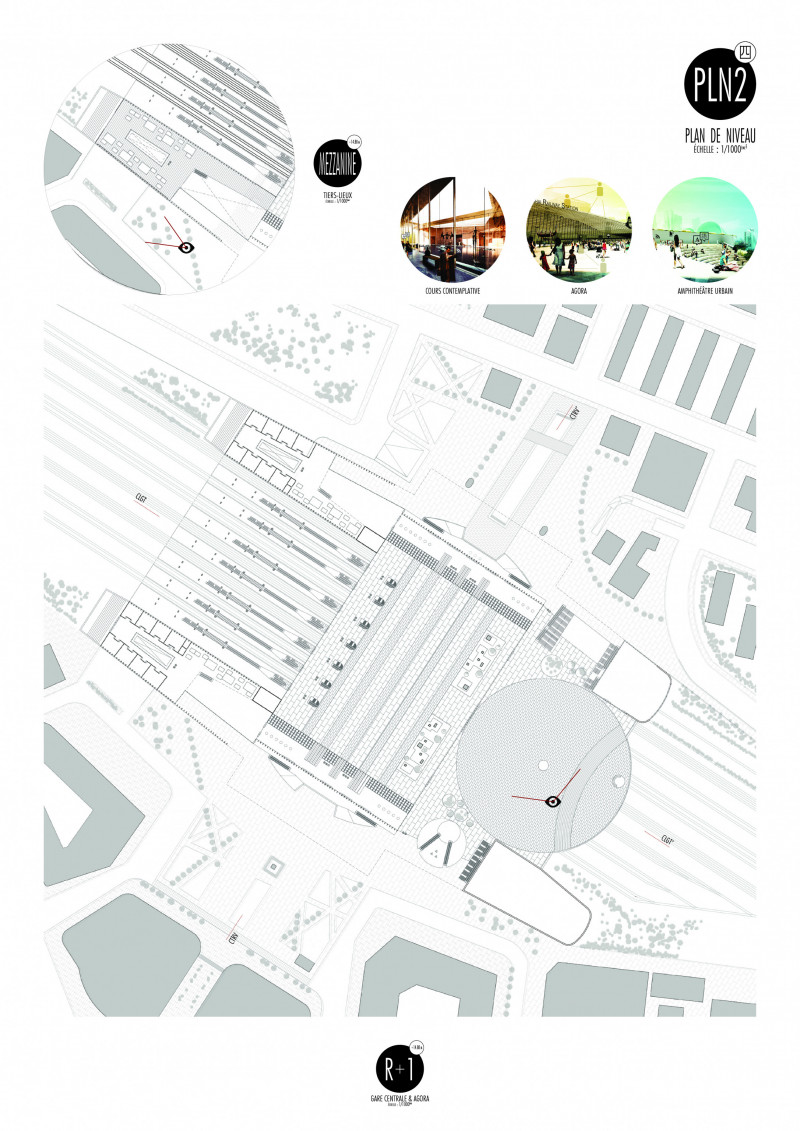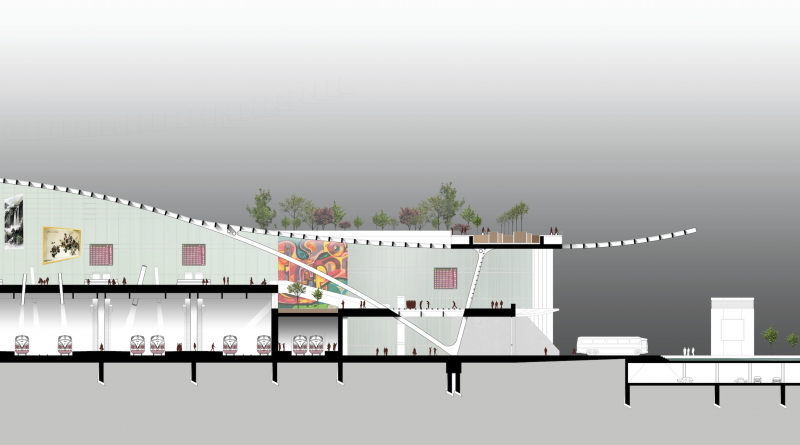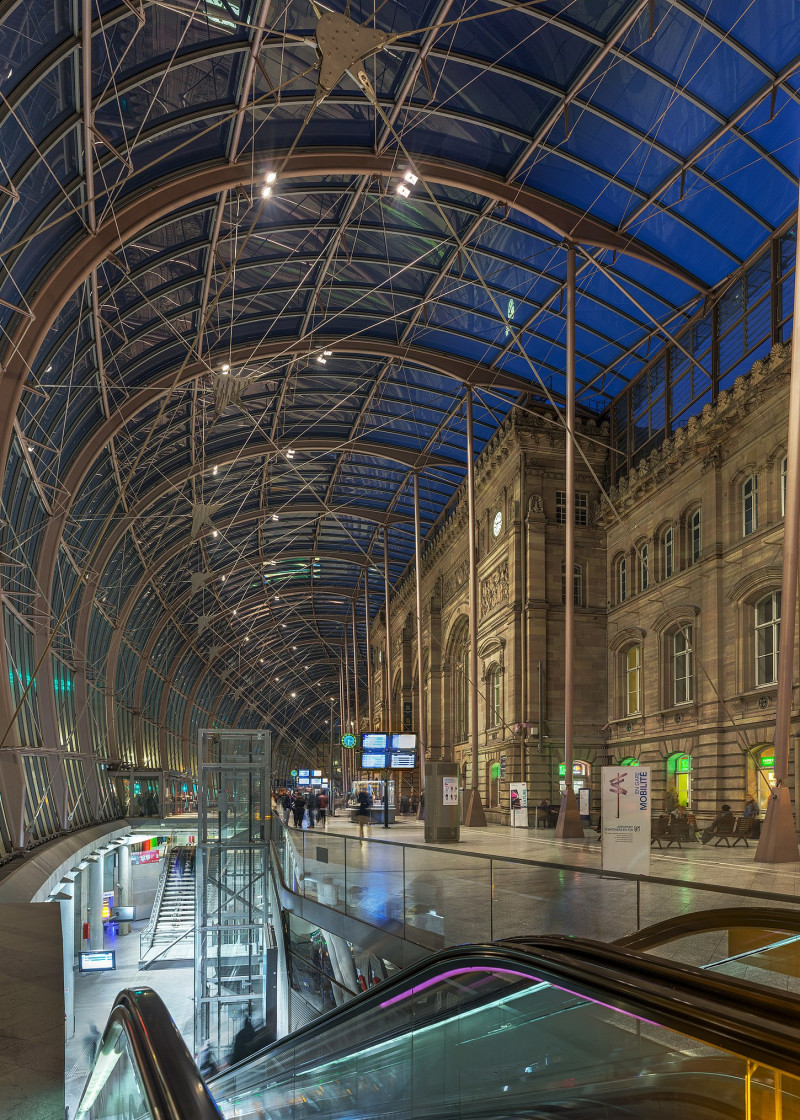Convergence
What spatial and social specificity for the railway station of tomorrow?
The project proposes a reflection on the types
of the railway station as a new "agora" in the city
the city: a space shaped by flows, but also a place for
of daily, cultural, work and leisure practices.
and leisure activities. On the urban scale as well as on the architectural scale, the building is defined as a bridge, between the different districts and between the
the different layers of the city, even if, in China, it must keep its character of fortress secured by innumerable filters and controls.
In addition to solutions for the urban challenges specific to Shanghai Central Station, at the architectural scale, the design aims to update the typology of the railway station of the 21st century. After the steam station and the high-speed station, the aim is to design the high-speed, energy self-sufficient and low environmental impact station. Adapting it to the cultural, urban and social specificities of Shanghai is one more challenge that this project aims to meet.




